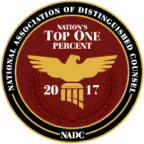
Motorcycle Accident Injuries
According to the Centers for Disease Control, motorcycle accidents resulted in 4,502 deaths in 2010 alone. The economic cost of these crashes due to motorcycle accident injuries and deaths was $12 billion. While different types of accidents can put riders at risk, the best way that riders can prevent injury and death is to wear a helmet. According to the Centers for Disease Control, helmets can reduce a rider’s chance of dying by as much as 37%. Helmets also reduce the risk of head injury, including traumatic brain injury by 69%. Safe riders understand that motorcycle riding can be dangerous. Therefore, many riders gain additional training and skills.
Here are 5 common types of motorcycle accidents and things you can do to stay safe:
• Left-turning Vehicles – One of the most common types of motorcycle accidents occurs when a car turns left. In these cases, the driver may misjudge how far a rider is away or how fast the motorcyclist is traveling. Unfortunately, when other drivers make this error, the people who suffer the greatest injuries or death are motorcyclists. According to Ride Apart, the best way to prevent this kind of accident is to see the oncoming vehicle. Even a car waiting to turn with a left turn signal could be a threat. Yet, in many cases, these accidents happen suddenly and are not the fault of the motorcyclist.
• Road Debris – Unlike a passenger vehicle, motorcycles don’t have the same stability. If a rider hits gravel or road debris, this could result in a wipe-out accident. The best way to prevent these kinds of accidents is to ride more slowly. Some riders take more advanced riding lessons in which they learn trail braking, but these skills should never be practiced on roadways where other vehicles are present.
• Cars Changing Lanes – Drivers of passenger vehicles are not always looking out for motorcyclists. While riders can avoid staying in a driver’s blind spot, everyone shares the road and relies on the safety of all road users. Motorcyclists can watch for turn signals, but in high-traffic situations, riders may not always be able to prevent all accidents.
• Rear-End Collisions – When riding in a passenger vehicle, a rear-end collision is usually a nuisance that involves a call to your insurance company and a ruined day. However, when you are rear-ended on a motorcycle, the consequences can be serious injury or death. Because rear-end collisions are rarely the fault of the rider being rear-ended, there is little that can be done to prevent these accidents, but riders can sometimes use other cars to shield them if a car is approaching at speed. Another way to prevent these accidents is to avoid rapid stops. The best way to avoid rapid stops is to control your speed and leave plenty of room between yourself and the vehicles in front of you.
• Car doors – A driver leaving his or her vehicle after parallel parking could be deadly. An opened car door can strike a rider unaware, leaving him or her no time to stop. If you are riding on a street with parallel parked cars, ride in the middle of the lane, away from the door width-or the “death zone.”
While many accidents can be prevented, unfortunately, not all passenger vehicle drivers are aware of how to best share the road. When drivers make mistakes, often the individuals who suffer the greatest injuries are motorcyclists. Riders don’t have the protective chassis of a car and therefore are more at risk of traumatic brain injury, spinal cord injury, and other serious life-altering damage.
How Can We Help?
"*" indicates required fields






